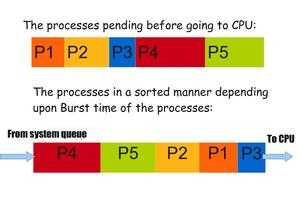Dynamic priority scheduling
Dynamic priority scheduling is a type of scheduling algorithm in which the priorities are calculated during the execution of the system. The goal of dynamic priority scheduling is to adapt to dynamically changing progress and form an optimal configuration in self-sustained manner. It can be very hard to produce well-defined policies to achieve the goal depending on the difficulty of a given problem.
Earliest deadline first scheduling and Least slack time scheduling are examples of Dynamic priority scheduling algorithms.
Measurement on effectiveness of scheduling
The idea of dynamic priority scheduling is to confine focus on algorithms that assign priorities based on temporal parameters and maximization of resource utilization; This utilization measurement of a certain scheduling, called schedulable utilization, is scaled from 0 to 1, and the higher the schedulable utilization means the better the algorithm. Every set of periodic tasks with total utilization less or equal than the schedulable utilization of an algorithm can be feasibly scheduled by that algorithm.
